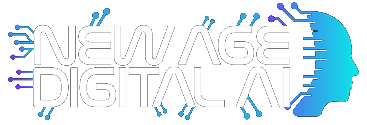Artificial intelligence (AI) is transforming the world at an unprecedented pace. From enhancing daily tasks to revolutionizing entire industries, AI’s impact is far-reaching. Behind these advancements lies intense AI research and development efforts, pushing the boundaries of what machines can achieve. This blog explores seven groundbreaking innovations in AI, highlighting the strides being made in this dynamic field.
Natural Language Processing (NLP)
Natural Language Processing (NLP) is a cornerstone of AI, enabling machines to understand, interpret, and generate human language. Recent advancements in NLP are truly remarkable. With the development of more sophisticated algorithms, AI systems can now comprehend context, tone, and even sentiment in human communication. For instance, chatbots and virtual assistants have become more conversational and accurate, significantly improving user experience. Additionally, NLP is enhancing translation services, making communication across languages smoother and more accessible.
Reinforcement Learning
Reinforcement learning is a cutting-edge area in AI research and development that is driving significant progress. This approach enables machines to learn from their environment by taking actions and receiving feedback. Over time, the system refines its strategies to achieve optimal outcomes. Reinforcement learning is particularly impactful in areas like robotics and gaming. For instance, AI-powered robots can now navigate complex environments and perform tasks autonomously. Furthermore, in gaming, AI agents are mastering strategies in games like chess and Go, outperforming human champions.
Generative Adversarial Networks (GANs)
Generative Adversarial Networks (GANs) represent a major leap forward in AI creativity. GANs consist of two neural networks—a generator and a discriminator—that work together to produce new, synthetic data that is indistinguishable from real data. This technology is revolutionizing fields such as art, design, and content creation. For example, GANs are being used to generate realistic images, videos, and even music. Additionally, GANs have applications in areas like medical imaging, where they can create high-quality images from low-resolution scans, aiding in diagnostics.
Explainable AI (XAI)
Explainable AI (XAI) addresses one of the biggest challenges in AI: transparency. Traditional AI models, especially deep learning systems, often operate as “black boxes,” making decisions that are difficult to interpret. XAI aims to make AI systems more understandable and transparent, allowing users to see how decisions are made. This innovation is crucial in fields like healthcare and finance, where understanding the reasoning behind AI decisions is vital. Furthermore, XAI is essential for ensuring accountability and fairness in AI-driven processes.
Federated Learning
Federated learning is an innovative approach to machine learning that addresses privacy concerns. Instead of centralizing data in a single location, federated learning enables AI models to train on data distributed across multiple devices. This method ensures that sensitive data remains on local devices, enhancing privacy while still allowing AI models to learn and improve. Federated learning is particularly relevant in industries like healthcare, where it protects patient data. Additionally, sectors like finance and telecommunications are adopting it to ensure data security.
AI in Edge Computing
AI in edge computing is a transformative development that is bringing AI capabilities closer to where data is generated. Instead of relying on cloud-based servers, AI models are now being deployed on edge devices, such as smartphones, IoT devices, and sensors. This shift reduces latency and enhances real-time processing, making AI more responsive and efficient. For example, in autonomous vehicles, AI in edge computing enables quicker decision-making, improving safety. Furthermore, this innovation is benefiting industries like manufacturing and agriculture, where real-time data processing is critical.
AI-Driven Drug Discovery
AI-driven drug discovery is revolutionizing the pharmaceutical industry by significantly speeding up the process of finding new treatments. Traditional drug discovery methods are time-consuming and expensive. However, AI is changing the game by analyzing vast datasets, predicting the efficacy of compounds, and identifying potential drug candidates more efficiently. This innovation is particularly crucial in the fight against diseases like cancer and COVID-19. Furthermore, AI-driven drug discovery is enabling personalized medicine by tailoring treatments to individual patients based on their genetic makeup.
Conclusion
AI research and development are unlocking new frontiers, driving innovations that are reshaping industries and improving lives. From innovations in artificial intelligence like NLP and GANs to advancements like federated learning and AI-driven drug discovery, the future of AI is bright. As these technologies continue to evolve, they will undoubtedly bring about even more transformative changes, with machine learning specialist at the forefront of this exciting journey. The pace of innovation in AI shows no signs of slowing down, promising a future filled with endless possibilities.
